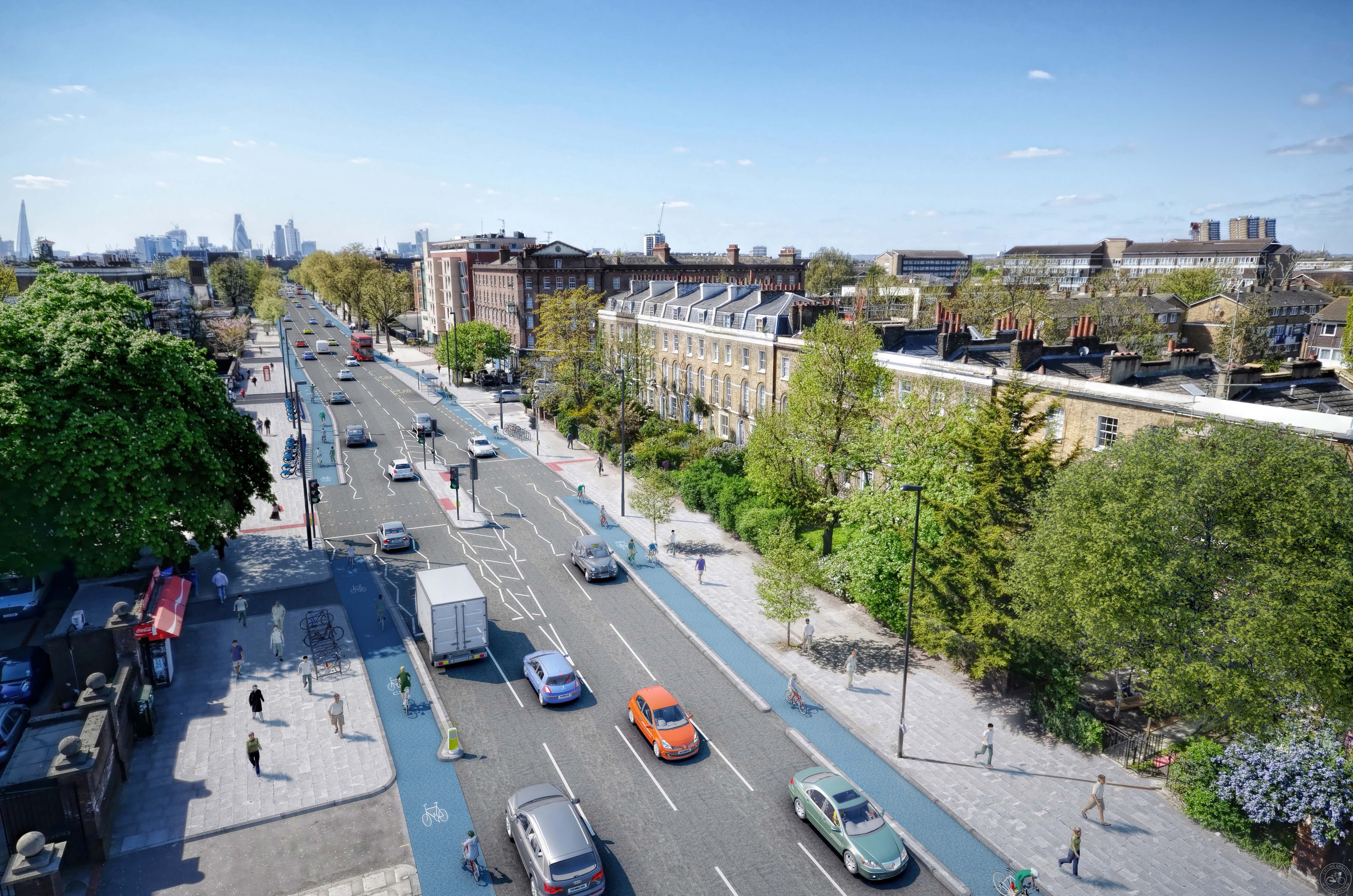Cycling Embassy response to Superhighway Consultation, Aldgate to Bow Roundabout

We support the principle of the Superhighway 2 plans from Aldgate to Bow Roundabout - providing safe, attractive conditions for cycling along this route - and would like to see them go ahead, albeit with some reservations about the details and designs in a number of locations, particularly at the major junctions, and at locations where the cycle track disappears and merges into a bus lane.
We also want to see that the maximum effective width of these cycle tracks is ensured, with forgiving kerbing on each side of the cycle track, and a shallow height difference between the track and the top of the kerbing. The cycle track should be built at an intermediate level, between the footway and the carriageway, to allow this.
Section 1
We approve of the general design principles of separation from motor traffic, using physical barriers, and bus stop bypasses. We also approve of the separate signalisation of cycle traffic, and left-turning motor traffic, to prevent turning conflicts.
However, while encouraging, we feel that these plans don't go far enough. In particular, at the major junction with Commercial Street, it appears as if there will be some delay westbound for cycle traffic, fully held while all motor traffic is progressing ahead. It would make more sense to provide a dedicated left-turn only lane for motor traffic, allowing straight-ahead cycle traffic to run with straight-ahead motor traffic.
In general, left turns for cycle traffic should be outside of the signals at junctions, freely available at all times, with (informal) zebra markings to give pedestrians priority. The staggered pedestrian crossings should be direct crossings, allowing the removal of the central median, to create more space for wider footways, or for better separation of turning movements. We feel that, while steps are being taken in the right direction, more close attention should be paid to how the Dutch design these kinds of large intersections, to minimise delay and inconvenience for people walking and cycling.
Section 2
In this section, and in others, we would ideally like to see the signalised parts of the pedestrian crossings running between the outside of the cycle tracks, where possible, rather than from footway to footway. This would involve pedestrians crossing the cycle tracks on (informal) zebra crossings, with waiting islands on either side of the crossing, as per Dutch practice. This would reduce delay for people cycling and walking, but would, in some locations, involve the reallocation of a general traffic lane.
Section 3
Separate signalisation of turning movements has again been employed at the Cambridge Heath Road junction, of which we approve, in principle. However, as per our comments in Section 1, while this is a step in the right direction, we feel the design does not go far enough. In particular at this junction, the north and south arms still present considerable problems for people wishing to turn right, with no separate signalisation, only 'early release' ASLs. Approached on green, people cycling will have to negotiate out into lane 3 of flowing motor traffic to turn right, which is not acceptable. Right turns from an E-W direction are not particularly clear. Again, this is an area in which we feel TfL could employ Dutch design practice, with better (protected) right-turn movements, and/or simultaneous green, to facilitate safe and convenient cycling through this junction. As with Section 1 comments, left turns should be freely available, at all times, protected from motor traffic.
The pedestrian crossings in this section should be direct, single-stage crossings, rather than two-stage crossings, again with cycle tracks bypassing them, with informal zebra markings.
Section 4
As with section 3, the pedestrian crossings should be single-stage crossing,s with cycle bypasses.
We are concerned by how the protected lane merges into a bus lane, both in principle, and in the way this 'merge' has been designed. We would prefer to see a general traffic lane merge with a bus lane for this short stretch, allowing the cycle tracks to continue protected in both directions.
Section 5
See our previous comments about the design of large intersections, in Sections 1 and 3, in reference to the Grove Road junction.
Section 6
Again, we would like to see single-stage pedestrian crossings, with cycle track bypasses, and informal zebra crossings.
Section 7
We have no comments on Section 7.
